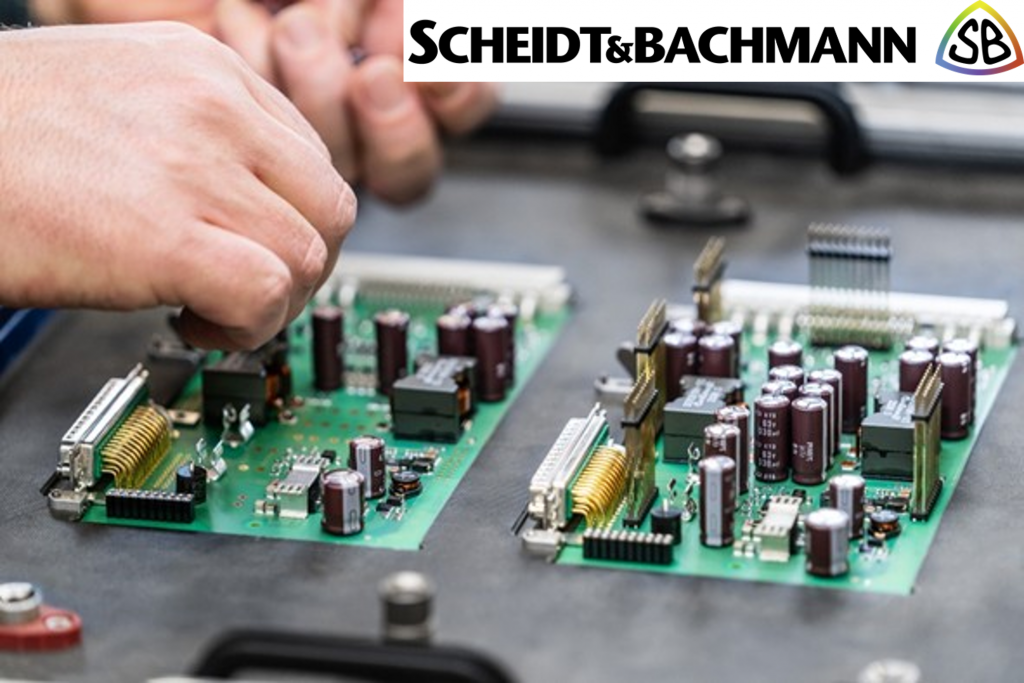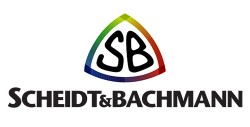
Scheidt & Bachmann is pursuing more efficient product development to enable faster market entry with reduced realization costs. Supporting this effort is the new digital twin of the THT soldering process from DEEPTRONICS GmbH: based on its results, RÖSNICK GmbH can precisely adapt the soldering mask to solderability – ensuring optimal process outcomes.
Challenges in THT Manufacturing
Tight deadlines combined with high manufacturing quality are everyday reality – especially in the internationally competitive mobility sector. The Scheidt & Bachmann Group, based in Mönchengladbach, is one of the leading providers of innovative system solutions for mobile living. With its products, the company supports traffic systems and keeps people and goods moving worldwide every day.
To remain competitive, Scheidt & Bachmann consistently invests in cutting-edge technologies. The goal is to make development and manufacturing faster, more efficient, and more robust. The THT soldering process often proves to be a bottleneck: it causes additional costs, redesigns, and quality issues.
“Design guidelines often fall short, and hidden risks in PCB designs frequently only become apparent during manufacturing, when THT solder joints turn out to be poorly solderable – at which point it’s already too late. This costs a lot of money and nerves during product realization,” says Christian Wipprecht, Head of Electronics Manufacturing at Scheidt & Bachmann.
The visible consequences of poorly solderable THT joints are quality problems, material waste, and delays up to just before SOP (Start of Production). Every additional design iteration takes weeks and ties up resources. In addition, there are invisible costs and risks:
- Hidden costs: Repeated redesigns and prototype runs initially increase development costs and later manufacturing costs – with tangible effects on competitiveness.
- Invisible risks: Unlike SMT, the THT domain lacks objective, data-based evaluation methods. Solderability is often only revealed in pilot or series production – with costly consequences.
- Complexity & uncertainty: The multiphysical influences in the THT process make reliable manufacturability assessments difficult. Developers must rely on gut feeling and rough guidelines – leading to safety margins, rework, and scrap.
The following industry example shows how new modeling methods from years of THT research can identify soldering problems already in the design phase.
Core Problem: DfM Rules Are Not Enough for Reliable THT Soldering
Relying solely on Design Rule Checks and rule-based Design for Manufacturing (DfM) is risky. The soldering process is physically more complex than rules can capture – as large research studies have shown. “Solderable” vs. “not solderable” is not a binary decision but depends on the specific THT joint design, the soldering method used, and its parameters. Process parameters cannot be accounted for in classical DfM checks by definition.
The high variability of multilayer designs and process physics cannot be adequately represented by rules alone. In Figure 1, the design on the right passes DfM spacing checks, while the one on the left violates them – yet the X-ray images show the opposite in terms of solderability.
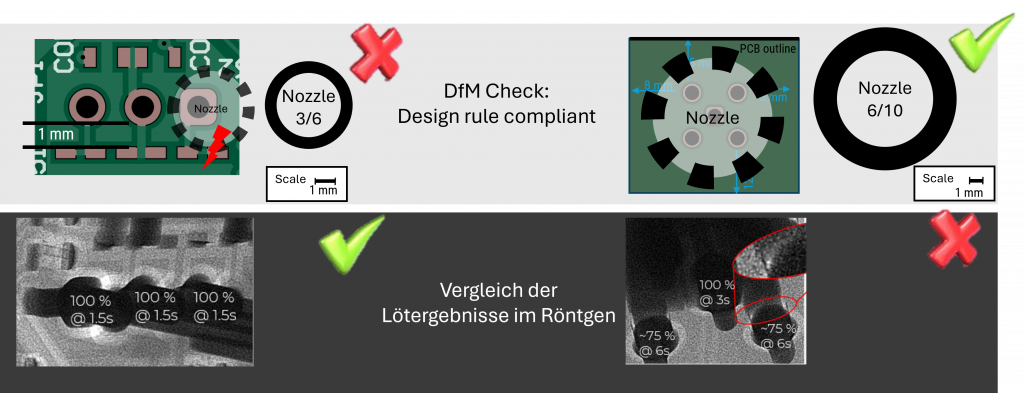
DfM Checks Based on the Digital Twin of THT Soldering Processes
The term “digital twin” is often used – but remains abstract. Several research projects at the FAPS institute at FAU Erlangen-Nürnberg have closed this gap for the THT soldering process. Their results led to the founding of DEEPTRONICS GmbH with the mission of supporting industry in a practical way.
In research, different modeling approaches were examined:
- Analytical methods: not accurate enough.
- Pure simulation: typically requires high computational effort and long runtimes per case.
- Machine learning: needs extensive training data, which most companies do not have.
By combining experimental data, simulation, and ML, the weaknesses of individual approaches can be overcome. The result: fast, precise, industry-ready calculations – without large upfront investments in simulation software, computing centers, or data collection.
The digital twin of the THT process – the Solder Copilot – works like a digital soldering system. A hybrid model of data algorithms and simulation assesses solderability before design freeze and material ordering (Figure 2). The “energy certificate” of a solder joint makes risks and optimization potential transparent and understandable for all stakeholders. It serves as an objective communication criterion for solderability in FMEA, development, and production.
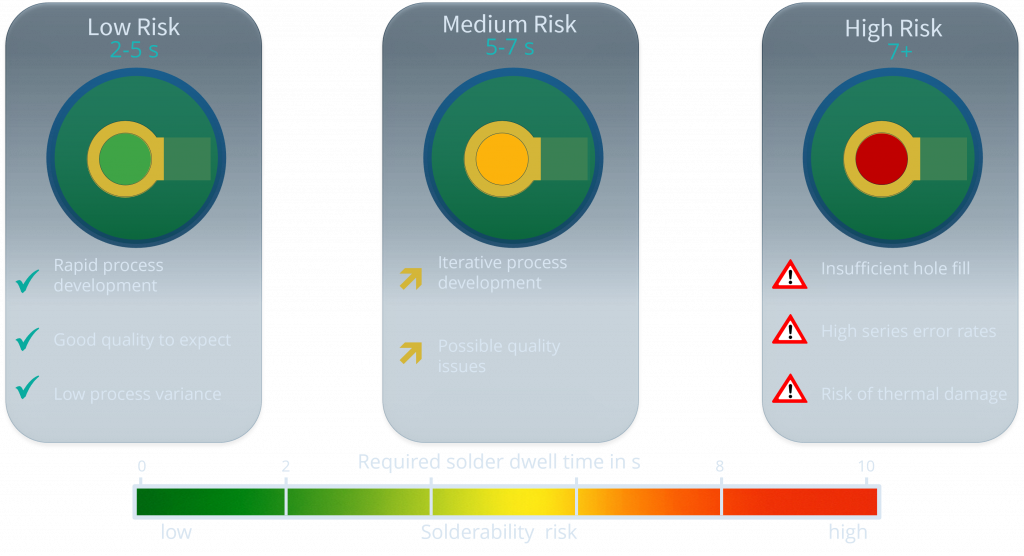
Figure 2: “Energy certificate” of a THT joint – transparent representation of heat demand and process window.
In addition, the tool can automatically generate soldering programs for an imported assembly design. This saves costs and manual process optimization effort while improving cycle times through optimized contact times per joint.
Solderable or Not? – Industry Example
Scheidt & Bachmann approached RÖSNICK GmbH and DEEPTRONICS GmbH with the question of manufacturability for a new product. The calculation of the current design revealed problematic joints – matching the soldering results (Figure 3A). After targeted design optimizations, recalculation confirmed the improvements: soldering heat demand was now within the process window, in the target range of up to 6 seconds contact time (Figure 3B). X-ray results and calculations matched.
Conclusion: Soldering problems can be detected early and addressed effectively.
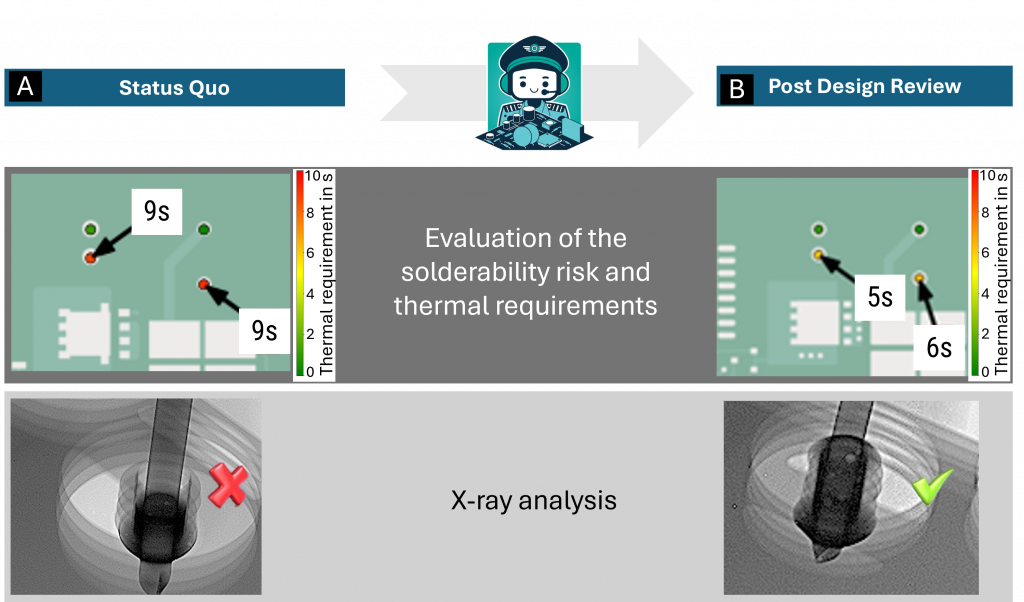
Digital Twin as the Basis for Product-Specific Solder Mask Design
The soldering mask is a key tool for process stability and quality. Purely geometric adjustment is not enough. Crucial is knowing the solderability of the assembly – ideally per joint – and tailoring the mask accordingly.
“The critical question of solderability is our daily business. Unfortunately, many customers only come to us once the layout is practically fixed and change costs are already high,” explains Oliver Hagemes, Sales Manager at RÖSNICK. “Those who consider solderability early reduce later manufacturing costs – through shorter cycle times and higher yield.”
The Solder Copilot makes solderability measurable and comparable. Risks become transparent, masks can be designed precisely – saving design iterations and raising quality.
“With the digital twin, we not only adapt the solder mask geometrically to the assembly, but also check the solderability of each individual joint and incorporate it into the design,” says Oliver Hagemes.
If the analysis takes place already in early prototypes, the assembly design can be optimized for the soldering process – securing quality for series production.

Saving Time and Money with Model-Based THT DfM
Companies must avoid extra costs and delays – further challenged by demographic change and skilled labor shortages. Model-based THT DfM with the Solder Copilot helps save both time and money. Redesigns quickly mean months of delay and five-figure sums for materials and soldering tools. Evaluating solderability before prototyping reduces iterations and risks.
“We have defined the THT DfM check with the Solder Copilot as the new state of the art, to be applied for critical new developments. Instead of waiting weeks for prototype materials, we now get solderability feedback in a fraction of the time and can discuss results directly with development,” says Christian Wipprecht.
Cutting from 4 to 3 design iterations alone saves 25% of development time – meaning months in the project schedule and thousands to tens of thousands of euros in prototype costs. The costs of delayed market entry are not even included.
“In addition, well-solderable joints reduce process development time, rework, and defect rates,” adds Christian Wipprecht.
Where it pays off most – since generic design rules often overlook THT risks:
- PCBs > 1.6 mm thickness
- Multilayer PCBs with many layers and high quality requirements
- Critical THT designs (e.g., large thermal masses, tight tolerances)
Even seemingly uncritical PCBs repeatedly cause costly surprises – early analysis uncovers them.
Benefits Along the Value Chain
- Development: clear, data-based decisions; fewer iterations
- Manufacturing: shorter throughput times, fewer errors, less rework
- Management: higher planning reliability; secured organizational know-how
Solder mask design also directly benefits from solderability data:
“The solderability analysis gives us crucial additional insights for mask construction. We don’t just consider bare geometry but also expected through-hole soldering issues – and can respond accordingly. This also creates added consulting value for RÖSNICK towards customers,” summarizes Oliver Hagemes.
Conclusion
Model-based THT DfM identifies hidden costs and risks early, making development and manufacturing processes measurably more efficient. Companies thus raise product development to the next level and secure an advantage in international competition.
Start Your Simulation-Based DfM Analysis Today
- Contact Us: Reach out to our team of experts for a consultation.
- Discover the Difference: Learn how our simulation-driven approach can enhance your PCB designs.
- Stay Ahead: Ensure your products meet the highest standards of quality and reliability.
Final Thoughts
Ensuring the manufacturability of PCBs with THT components requires more than just adherence to design rules. By leveraging simulation-based DfM analysis, you can proactively address thermal challenges, optimize your designs, and achieve superior manufacturing outcomes.
At DEEPTRONICS, we are uniquely equipped to provide this specialized service, helping you navigate the complexities of THT soldering and deliver high-quality electronic products.
References

